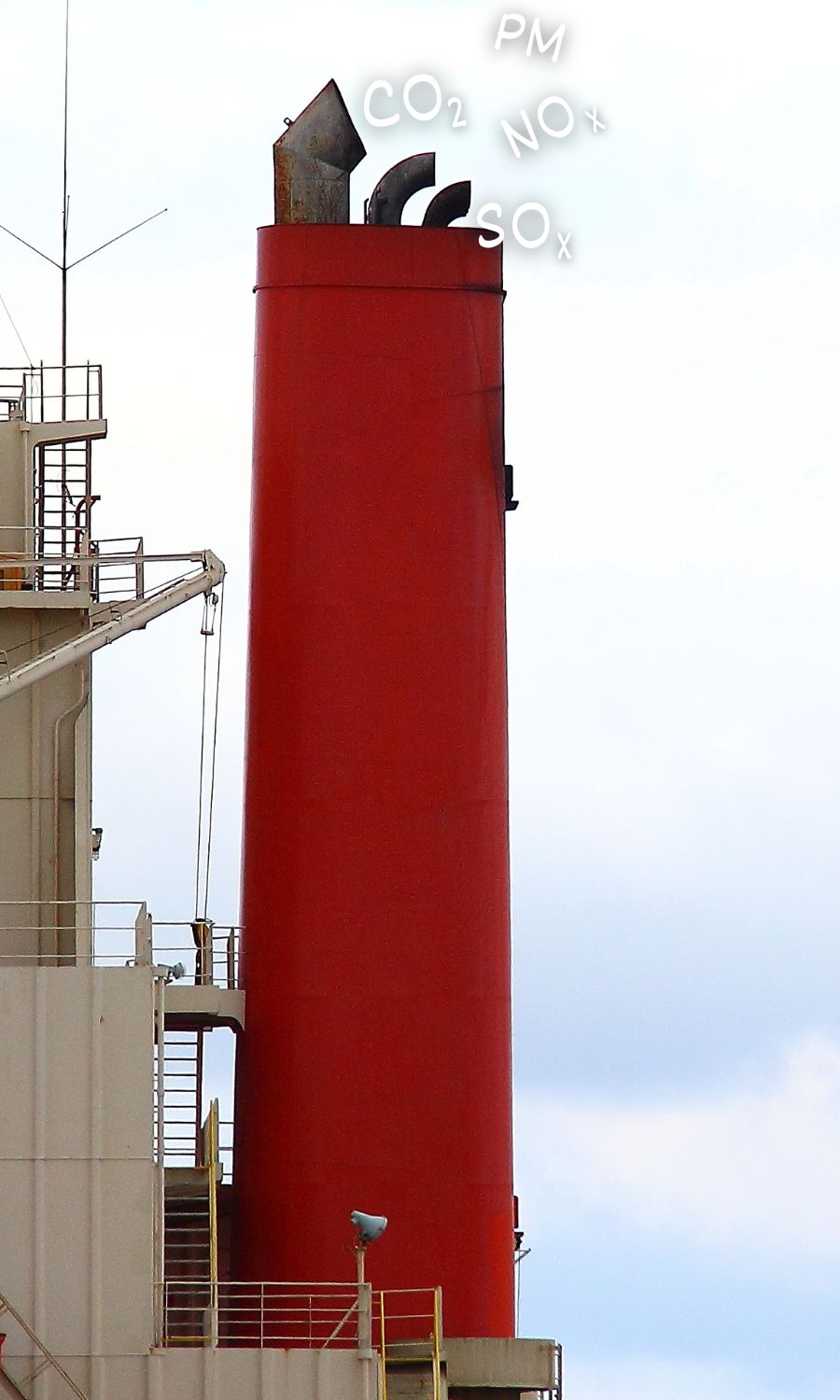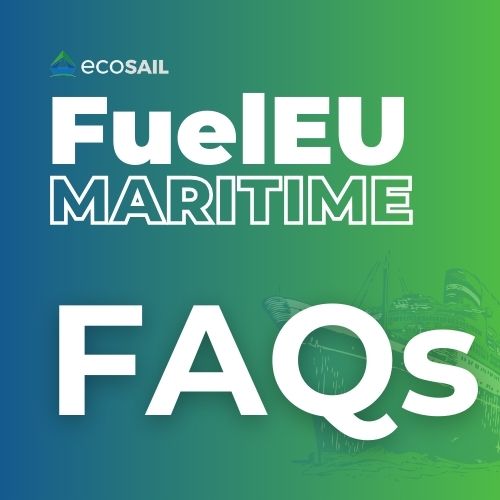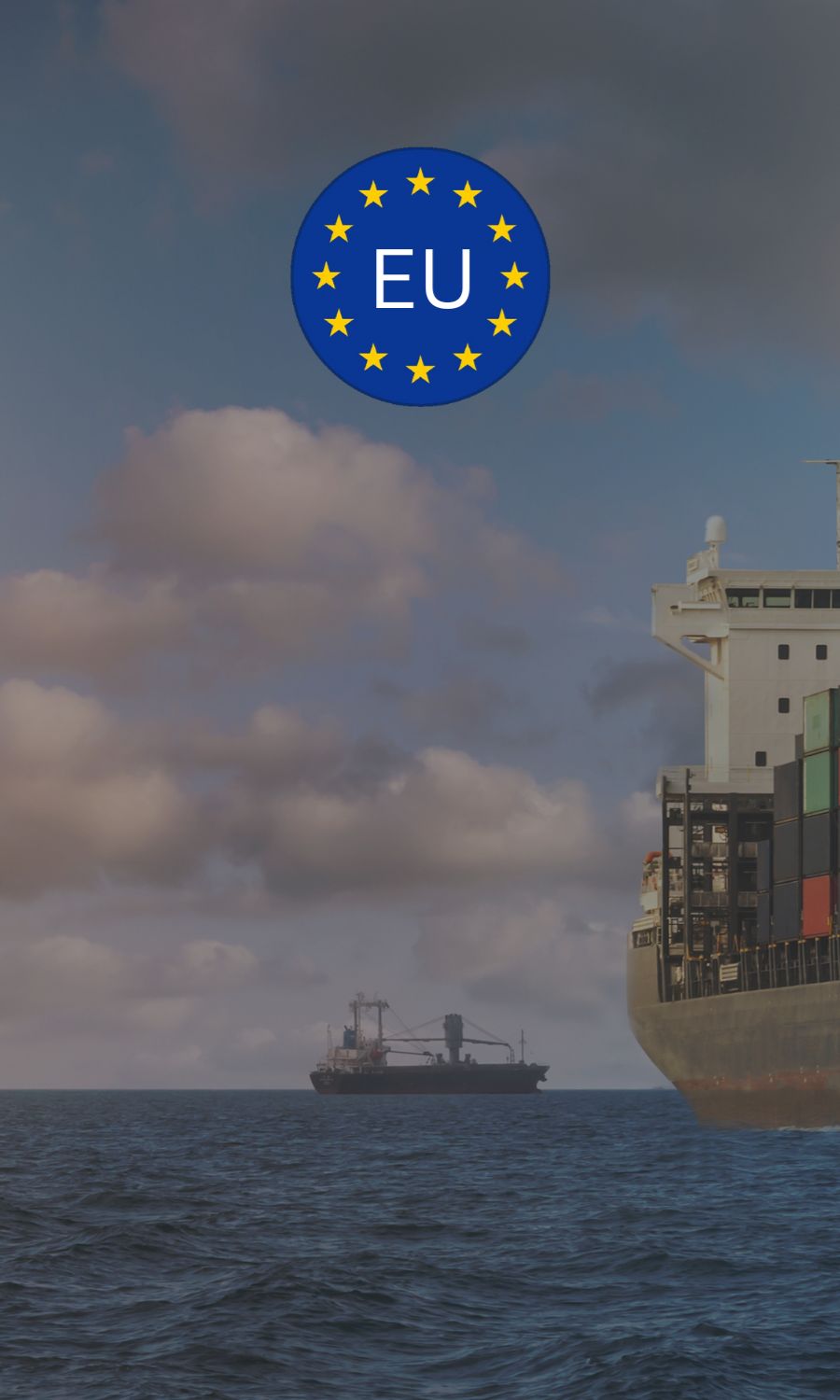FuelEU Maritime Regulation
Introduction to EU’s FuelEU Maritime Regulation
The FuelEU Maritime (FEUM) Regulation (Regulation 2023/1805) was adopted in July 2023. It is a part of the European Commission’s “Fit for 55” package, to reduce EU GHG emissions by atleast 55% by 2030 as compared to 1990 levels. This FEUM Regulation promotes the use of renewable, low-carbon fuels & zero-emission technologies for Ships.
FuelEU Maritime is applicable for ships above 5,000 GT calling at EU (precisely EEA) ports, regardless of their flag. This means that EU voyages – between two EU ports (100% applicability), or from EU port to non-EU port (50% applicability), or from non-EU port to EU port (50% applicability) will fall under the scope of this FuelEU Regulation. Apart from that, energy used by ships at berth in EU/EEA ports (100% applicability) also falls under this scope. The scope could change in a scheduled review by a committee towards the end of year 2027.
Some ship types are exempt from this regulation, such as Warships, Naval Auxiliaries, Fish-catching & fish-processing ships, Ships not propelled by mechanical means, and Govt. ships used for non-commercial purposes.
What are the main goals of FuelEU Maritime Regulation?
- Reduce the GHG Intensity of Energy onboard
- Promote the use of Onshore Power Supply (OPS)
- Incentivize the use of Renewable Fuels (especially RFNBOs)
Blogs
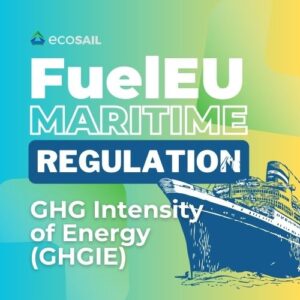
FuelEU Maritime Regulation (FEUM) – Summary

Introduction to FuelEU Maritime Regulation (FEUM)

Thriving Fuel Production Pathways for FuelEU Maritime now (2024)

Calculating the GHG Intensity of Energy for FuelEU
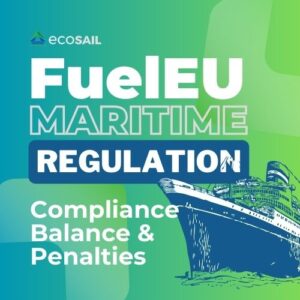
How to calculate Compliance Balance & FuelEU Maritime Penalty now 1

FuelEU Maritime – Banking, Borrowing & Pooling Explained
Videos
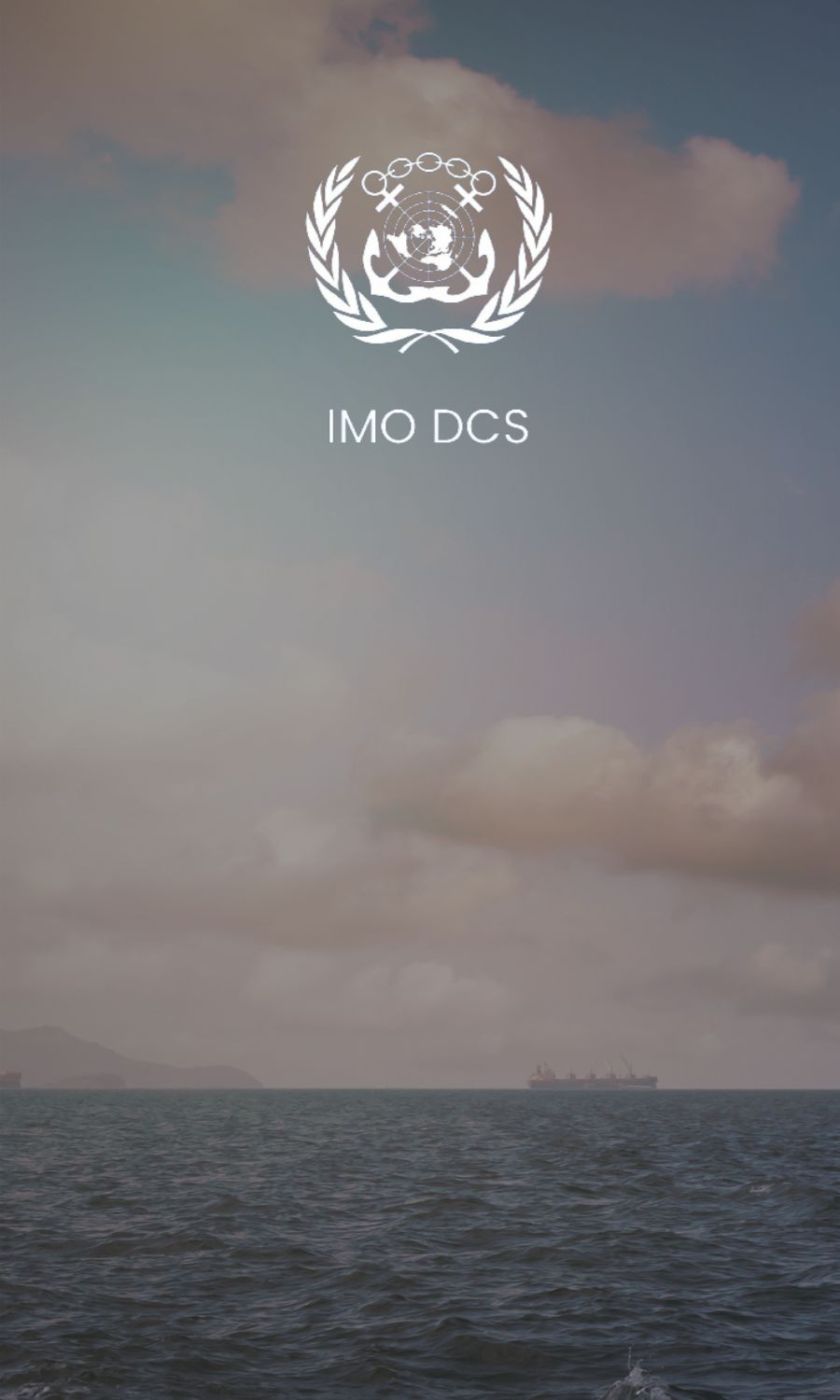
Goal 1 : Reduction of the GHG Intensity of Energy (GHGIE) Used Onboard
What is GHGIE used onboard?
GHGIE measures how much GHG emissions are released for each unit of energy developed on a ship. It is measured in gCO2eq/MJ. Think of it as the “environmental footprint per unit of energy.” It tells us how efficiently a ship is using its fuel in terms of the emissions. It basically measures the polluting capacity of a ship based on the fuels used by the ship.
Calculate your GHGIE – Blog
Example : In simple terms, let’s say a ship burns 10 tons of a fuel over a day, and that produces 30 kg of CO2 equivalent emissions. While burning those 10 tons of fuel, 1,200,000 J energy is generated. Then, GHGIE = 30,000 / 1,200 = 25
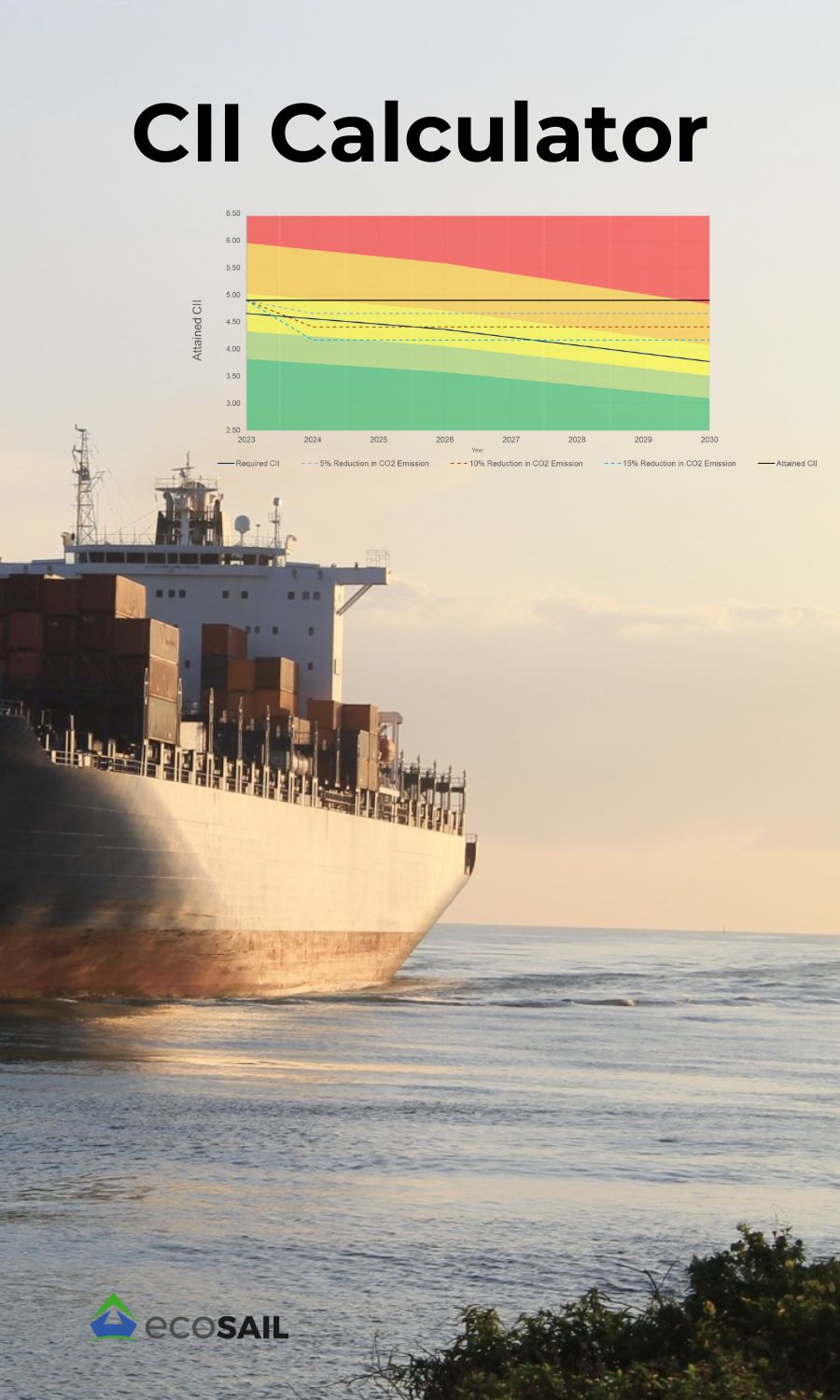
What ships does FuelEU apply to?
Naturally, a ship with a lower GHGIE is considered more environmentally friendly because it produces fewer emissions per unit of energy. An important point to note here is that GHGIE calculations in FuelEU Maritime consider not only emissions from the fuel tank of the ship to the exhaust emissions (also called Tank-to-Wake, or TtW), but the complete life-cycle of that fuel from its extraction, production, distribution & transportation too uptil final combustion & exhaust (also called the Well-to-Wake, or WtW).
Every 5 years, a target GHGIE is set with respect to a reduction from a reference value, i.e. 91.16 gCO2eq/MJ. To stay compliant, ships have to maintain a GHGIE value below the target value for the year under consideration. A few flexibility mechanisms have been granted so that there can be a smoother transition to cleaner fuels without affecting the bottom line.
Goal 2 : Promote the use of Onshore Power Supply (OPS)
From 1st January 2030, container ships & passenger ships above 5,000 GT, moored at quayside in a port of call at a major (Ten-T) EU port shall cover its electrical power demand at berth by OPS. From 1st January 2035, the use of OPS is obligated at non-major (non-Ten-T) EU ports too.
Goal 3 : Incentivize the use of Renewable & Low-carbon fuels and RFNBOs
The use of RFNBOs is rewarded until 31st December 2033, a reward factor of 2 is assigned – meaning that GHG intensity of RFNBOs will be halved for the calculation of actual GHGIE used on board.
Who is responsible for FuelEU compliance?
The responsibility of compliance for FuelEU is on the shipping company (shipowner or manager, bareboat charterer, who has assumed responsibility for the operation of the ship, including duties & responsibilities imposed by the ISM code)
The ISM company is the responsible company. Each responsible company will need to be registered with an administering state, just like EU-ETS.
Company that has responsibility for operation of the ship on 31st Dec shall be responsible for compliance of the ship for the whole calendar year. The previous company is required to report & verify the energy use & emissions
What are all things to report for FuelEU?
Ship Based Reporting : Port of Departure & Arrival – Date & Hours, Amount consumed of each fuel type, BDNs, Amount of electricity through OPS, For each fuel, WtW, TtW Emission Factors, Time Spent at Sea & at Berth, Amount of each type of substitute energy, Ice-class conditions, if applicable
Annual Based Reporting : Companies shall record the voyage information in a timely & transparent manner and compile them on an annual basis. By 31st January of the verification period, they shall provide a ship-specific report to the verifier to verify compliance with FuelEU
The first reporting period for FuelEU Maritime will be from 1st January 2025 to 31st December 2025.
Upcoming Service
How can Ecosail help in FuelEU Compliance
The Module has a vessel reporting feature with which you can effortlessly track vessel performance, fuel consumption, emissions & compliance metrics with our intuitive and comprehensive vessel reporting feature
Using this module keeps you on the know about needs of the machines in the Vessel. Our ability to integrate it with your Vessel’s existing systems saves your time & makes it more intelligent as a system
Our FuelEU-embedded Eco-compliance Software
